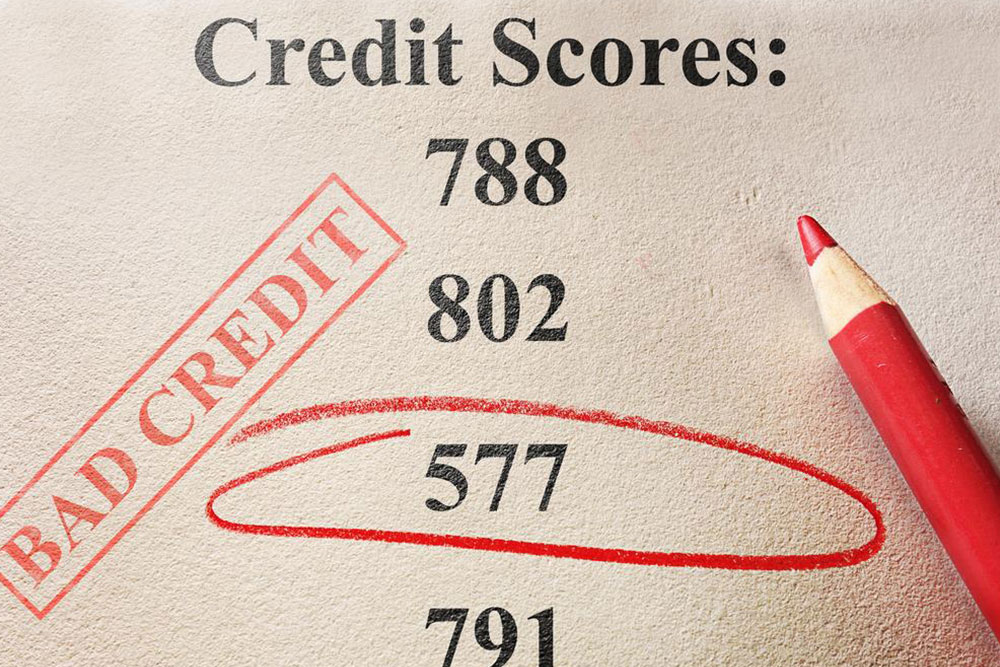Comprehensive Guide to Challenges Faced in Bad Credit Lending and How to Overcome Them
This comprehensive guide explores the challenges faced by individuals with bad credit when applying for loans. It covers credit scoring systems, the impact of poor credit on borrowing, types of loans affected, and effective strategies for credit improvement. In an evolving financial landscape, understanding these factors helps borrowers make informed decisions, improve their creditworthiness, and access better financial opportunities in the future. Whether you're dealing with student loans or personal borrowing, this article provides valuable insights for sustainable financial health.

Understanding the Complexities of Lending to Individuals with Bad Credit
Maintaining a good credit score is essential for securing favourable loan terms, low interest rates, and financial flexibility. It acts as a reflection of an individual’s or business’s creditworthiness, based on their historical debt repayment behaviour. A high credit score indicates responsible borrowing and payment practices, which reassures lenders to offer loans with better terms. Conversely, a poor or bad credit score signifies potential risks for lenders, often associated with missed payments, defaults, or financial instability, making borrowing more difficult for such individuals.
In the United States, credit scoring is predominantly managed by FICO, a leading credit bureau analytics company. FICO scores are derived from data sourced primarily from three major credit bureaus: TransUnion, Experian, and Equifax. These credit reports compile detailed histories of debt and repayment patterns, forming the basis for the credit scores, which range from 300 to 850. A score below 580 is typically categorized as a bad credit score, which can significantly impact borrowing opportunities.
Individuals with low credit scores often face challenges like delayed or missed payments, high debt levels, and limited or poor credit histories. Such factors significantly increase the likelihood of default, prompting lenders to respond with more cautious lending practices. As a result, bad credit borrowers are usually subject to higher interest rates, stricter loan terms, and less attractive collateral options. This practice, known as subprime lending, is common across various types of loans, including personal loans, auto loans, and notably, student loans.
Particularly in the case of student loans, borrowers with bad credit face additional hurdles because their financial histories are often limited, and their assets may not support other collateral-based loans. To mitigate risk, lenders incorporate higher interest rates to compensate for the increased chance of default. While these measures may seem discouraging, understanding the dynamics of bad credit lending can help prospective borrowers better prepare and improve their chances of accessing suitable credit in the future.
Why Bad Credit Affects Borrowing Opportunities
Bad credit acts as a red flag for lenders, signaling higher risk. This risk is evaluated based on the borrower’s credit history, payment behaviour, debt levels, and recent financial activity. When a borrower demonstrates consistent payment issues or defaults, lenders perceive that individual or entity as unreliable, which leads to rejection or higher costs when seeking loans.
For example, a person with a credit score below 580 might find it difficult to secure a mortgage or a large personal loan unless they provide substantial collateral or agree to significantly higher interest rates. This stems from the lender's need to safeguard their investment against potential defaults. Consequently, many individuals with bad credit are often forced to accept less favourable terms, prolonging their financial recovery and access to credit.
Impact of Bad Credit on Various Loan Types
The repercussions of bad credit can vary depending on the type of loan being applied for. For instance, credit cards for bad credit are tailored for individuals with lower scores, offering limited credit limits and higher interest rates. Auto loans for bad credit borrowers also tend to carry elevated rates and require substantial down payments. Student loans often feature specific provisions, but students with bad credit might face higher borrowing costs or limited loan options.
Despite these obstacles, many lenders recognize the importance of extending credit to individuals with bad credit, especially for essential needs like education, housing, or transportation. They often incorporate higher interest rates and stricter repayment conditions to balance risk, while also providing opportunities for credit rebuilding through secured credit cards or credit-building loans.
Strategies to Improve Bad Credit and Enhance Future Borrowing Prospects
While bad credit poses significant challenges, it is not a permanent sentence. Borrowers can take concrete steps to improve their credit scores over time. These include consistently paying bills on time, reducing outstanding debts, avoiding multiple loan applications within a short period, and checking credit reports regularly to correct errors. Establishing a history of responsible financial behaviour can gradually enhance credit scores, making future lending easier and more affordable.
Additionally, alternatives like secured loans, credit builder programmes, and small manageable credit lines can help rebuild trust with lenders. Maintaining low credit utilization—generally below 30%—and avoiding default on existing obligations also play crucial roles in boosting creditworthiness. These efforts require patience and discipline but ultimately can lead to more favourable borrowing conditions and access to a wider range of financial products.
The Future of Bad Credit Lending
As the financial landscape evolves with technology and data analytics, new opportunities are emerging for those with bad credit. Lenders are increasingly leveraging alternative data sources such as utility bills, rental payments, and peer-to-peer lending platforms to assess creditworthiness beyond traditional scores. This trend could eventually provide more nuanced and accessible lending options for individuals with weak or limited credit histories.
Overall, understanding the intricacies of bad credit lending equips borrowers to navigate the complex landscape more effectively. By adopting responsible financial practices and exploring innovative credit options, individuals can work towards improving their credit profiles and gaining better financial stability in the long run.





